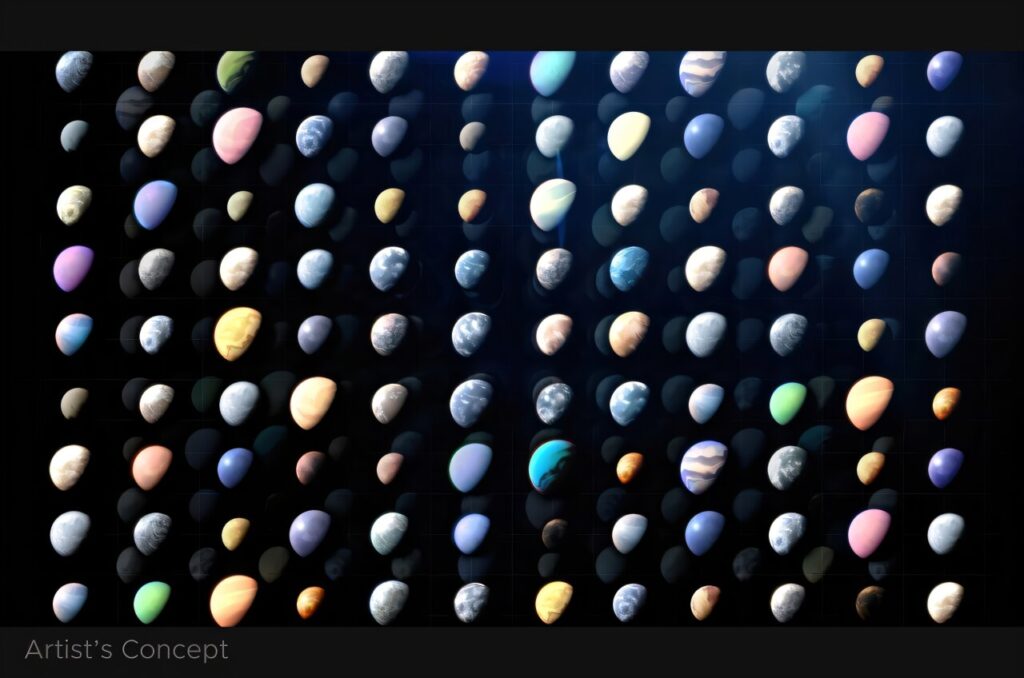
The official tally of exoplanets—planets located outside our solar system—tracked by NASA has reached an impressive 6,000. This significant milestone was achieved through the collaborative efforts of scientists worldwide, with confirmed planets being added on a rolling basis. Managed by NASA’s Exoplanet Science Institute (NExScI) at Caltech’s IPAC in Pasadena, California, the count continues to grow as more than 8,000 additional candidate planets await confirmation.
“This milestone represents decades of cosmic exploration driven by NASA space telescopes—exploration that has completely changed the way humanity views the night sky,” said Shawn Domagal-Goldman, acting director of the Astrophysics Division at NASA Headquarters in Washington. “Step by step, from discovery to characterization, NASA missions have built the foundation to answering a fundamental question: Are we alone?”
The Journey to 6,000 Exoplanets
The achievement comes 30 years after the first exoplanet was discovered around a star similar to our sun in 1995. Before this, only a few planets had been identified, orbiting stars that had exhausted their fuel and collapsed. The journey to catalog these distant worlds has been marked by technological advancements and a growing understanding of the universe.
Despite the belief that billions of planets exist within the Milky Way galaxy, the task of finding them remains daunting. As the number of known exoplanets climbs, scientists gain insights into how these planets compare to those in our own solar system. While our solar system hosts an equal number of rocky and giant planets, rocky planets appear to be more prevalent across the universe.
Understanding the Diversity of Exoplanets
Researchers have discovered a variety of planets with characteristics vastly different from those in our solar system. These include Jupiter-sized planets orbiting closer to their stars than Mercury orbits the sun, planets with dual-star systems, and even those orbiting dead stars. Some planets are covered in lava, while others have densities akin to Styrofoam or clouds made of gemstones.
“Each of the different types of planets we discover gives us information about the conditions under which planets can form and, ultimately, how common planets like Earth might be, and where we should be looking for them,” said Dawn Gelino, head of NASA’s Exoplanet Exploration Program (ExEP) at the Jet Propulsion Laboratory in Southern California.
Methods of Discovery and Future Prospects
Direct imaging of exoplanets remains rare, with fewer than 100 captured so far due to their faintness compared to their parent stars. The majority of discoveries are made using indirect methods, such as the transit method, where astronomers observe a star dimming as a planet passes in front of it. To confirm these candidates, follow-up observations with additional telescopes are often necessary, contributing to the backlog of unconfirmed planets in the NASA Exoplanet Archive.
“We really need the whole community working together if we want to maximize our investments in these missions that are churning out exoplanet candidates,” said Aurora Kesseli, deputy science lead for the NASA Exoplanet Archive at IPAC. The rate of discoveries has accelerated, with the database reaching 5,000 confirmed exoplanets just three years ago. This trend is expected to continue with contributions from the European Space Agency’s Gaia mission and NASA’s upcoming Nancy Grace Roman Space Telescope.
Future of Exoplanet Science
NASA’s future endeavors will focus on finding rocky planets similar to Earth and analyzing their atmospheres for biosignatures—indicators of past or present life. The James Webb Space Telescope has already examined the atmospheres of over 100 exoplanets, but studying Earth-like atmospheres requires advanced technology to block the glare from their stars.
The Roman telescope will feature a technology demonstration instrument called the Roman Coronagraph, designed to test new starlight-blocking technologies. At its peak, the coronagraph should directly image planets the size and temperature of Jupiter. NASA is also developing the Habitable Worlds Observatory, a mission concept aimed at detecting Earth-like planets.
Implications and Looking Ahead
The milestone of 6,000 confirmed exoplanets underscores the progress made in cosmic exploration and the quest to understand our place in the universe. As technology advances, the potential to discover habitable worlds and possibly even signs of life increases, promising a future rich with discovery and understanding.
NASA’s commitment to exploring the cosmos not only enhances scientific knowledge but also inspires a sense of unity and curiosity about the universe. With each new discovery, humanity takes another step closer to answering the age-old question: Are we alone?





